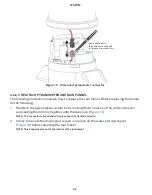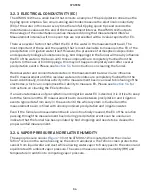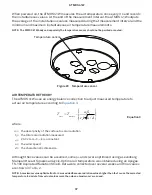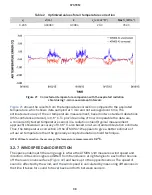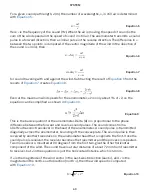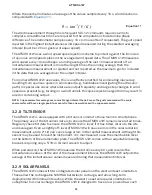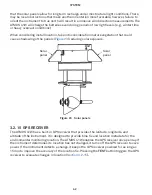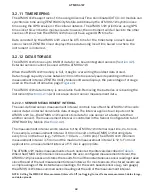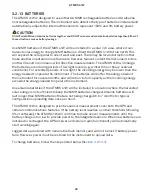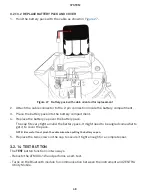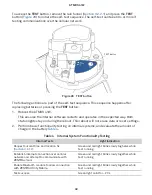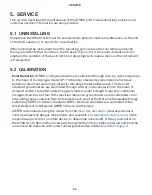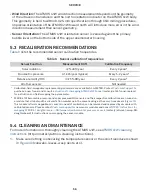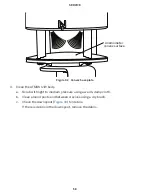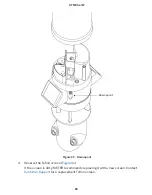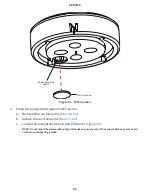
45
ATMOS 41W
3.2.13 BATTERIES
The ATMOS 41W is designed to use either AA NiMH rechargeable batteries or AA alkaline
nonrechargeable batteries. The instrument auto detects the type of batteries installed and
automatically adjusts the internal thresholds to represent 100% and 0% battery power.
CAUTION
DO NOT mix NiMH and alkaline batteries together and DO NOT mix new and old alkaline batteries together. Either of
these situations causes battery leakage.
Use NiMH batteries if the ATMOS 41W will be installed in a solar rich area, where it can
harvest solar energy to charge NiMH batteries. Orient the ATMOS 41W to true north. This
will expose the solar panel to orient west and east. There may be local obstructions that
make another orientation more favorable, however, failure to orient the instrument to true
north will result in erroneous wind direction measurements. The ATMOS 41W will charge
the batteries even during periods of low light levels (e.g., winter time or heavy overcast
conditions). For extended periods of low light, the incoming energy may be lower than the
energy needed to operate the instrument . The batteries will buffer the energy needs of
the instrument for several months and will return to full capacity as the incoming energy
exceeds the energy needed to operate the instrument.
Use alkaline batteries if the ATMOS 41W will be installed in a location where the harvested
solar energy is not sufficient to keep the NiMH batteries charged. Alkaline batteries will
last longer than NiMH batteries that are not being charged (6 to 7 months for typical
configurations uploading data once per hour).
The ATMOS 41W is designed to prioritize sensor measurements over both the GPS and
cellular communications features. If the battery level reaches a critical threshold (showing
0% in software), the ATMOS 41W will continue to make sensor measurements until the
battery charge is too low to provide power to the integrated sensors. When new batteries are
installed or recharged, the GPS receiver and cellular radio functionality will automatically
start working again.
Logged data are stored with nonvolatile flash memory and will not be lost if battery power
fails. However, power must be restored to the instrument to upload data.
To change batteries, follow the steps listed below (
.


